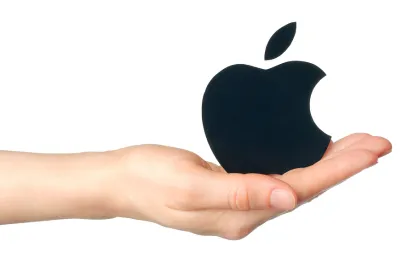As we mentioned in December, the International Trade Commission issued a notice to review the Final Initial Determination and Recommended Determination issued by Administrative Law Judge Pender in Certain Mobile Electronic Devices and Radio Frequency and Process Components Thereof, 337-TA-1065 (“Certain Mobile Electronic Devices”), in which, despite finding that a valid patent was infringed and all jurisdictional requirements met, ALJ Pender had recommended that no exclusion order be issued against Apple because such an order would be contrary to the public interest. See Certain Mobile Electronic Devices, Commission Notice, Doc. ID. 657154 (Dec. 12, 2018). Agreeing with Apple, ALJ Pender had reasoned that an exclusion order banning the accused products—Apple phones with Intel-made processor chips—would effectively eliminate Intel from the U.S. smartphone market, thereby giving Qualcomm monopoly power in that lucrative market. Judge Pender also found that eliminating Intel from the U.S. smartphone market would also harm the ability of the United States to develop emerging 5G technology, which in turn will harm U.S. national security and competitiveness. Judge Pender concluded that such consequences were not in the public interest.
In its notice of review, the Commission asked Qualcomm and Apple to address what type of remedy should issue if the Commission were to uphold ALJ Pender’s infringement and validity findings. It specifically sough input on “whether delaying implementation of a limited exclusion order or cease-and-desist order for a fixed period of time (e.g., six months or one year) would effectively balance enforcement of Qualcomm’s patent rights against the adverse consequences alleged by the parties with respect to industry competition, monopolization, the alleged exit of Apple’s chipset supplier from the market for 5G technology, and other concerns.” “If not,” the Commission said, the parties were to “explain whether any other ‘carve-out’ or limitation in a remedial order can accomplish this objective.” The Commission also asked the parties to brief “whether national security concerns may be taken into consideration for the purpose of evaluating the public interest and, if so, whether and how such national security concerns would be implicated if a limited exclusion order were to issue covering products that infringe [the claim at issue].” And it asked whether a design around were possible and, if so, how long it would take to implement.
In its responsive submission, Apple argues that it has designed around the accused functionality and requests a six-month delay in the execution of the exclusion order (if the Commission upholds ALJ Pender’s infringement and validity findings) to seek review of the new design by U.S. Customs and Border Protection and also to sell its existing inventory. Qualcomm counters that Apple’s redesign is itself evidence that Apple’s speculation about the harms an exclusion order would pose to the public interest were baseless. And it argues that Apple has infringed its intellectual property for long enough, and that a six-month delay in the imposition of an exclusion order to allow Apple enough time to sell its inventory of infringing goods will only “encourage infringement and undermine faith in the U.S. IP system.”
The Commission is expected to issue its final determination by the end of the month. That determination will likely have a wide-ranging impact, for the parties’ submissions do not simply reflect their immediate dispute over whether Apple has infringed any of Qualcomm’s valid patent claims and, if so, what the remedy for that infringement should be. They also reflect a wider disagreement over the nature and scope of the Commission’s role in protecting U.S. companies from unfair competition on the one hand, and in protecting the U.S. economy itself on the other. The Commission’s final determination will likely shape the conversation regarding these larger questions for some time to come.
That said, the 1065 investigation is only a piece of Qualcomm’s global patent infringement dispute with Apple. In December, Qualcomm won a patent case against Apple in Munich and obtained an injunction against the sale of certain iPhone models, but it lost another case against Apple in Mannheim the following month. Both parties have said they would appeal. Qualcomm also secured the ban of certain iPhone models in China, but Apple has appealed that ruling too and, in an echo of recent developments in the U.S., has said that it has designed around the patented technology.
It remains to be seen how the Commission and the German and Chinese courts will ultimately decide the issues before them—whether Apple infringes any valid Qualcomm patent claims, if so, what the remedy should be, and whether Apple’s alleged design around effectively circumvents the patented technology. But the ongoing worldwide dispute between the two technology giants provides valuable insight into the ever-changing landscape of intellectual property protection and patent enforcement here and abroad.






 />i
/>i

